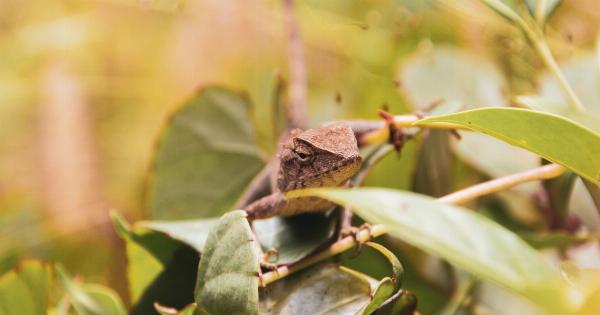Samamides and chameleons are fascinating creatures that belong to the lizard family. Although they share some similarities, they have distinct features that make them unique.
In this article, we explore the world of samamides and chameleons, from their characteristics to their habitat and lifestyle.
What are Samamides?
Samamides are a type of lizard that belong to the family Scincidae. They are known for their cylindrical body shape and long, slender limbs. Samamides come in a variety of colors, from brown to green and even blue.
They are found in various habitats, including deserts, forests, and fields.
The size of samamides varies depending on the species. Some species grow up to a foot long, while others are as small as a few inches. Samamides are omnivores, meaning they eat both plants and animals. Their diet includes insects, fruits, and leaves.
Characteristics of Samamides
Samamides have several unique characteristics that distinguish them from other lizards. One of these is their cylindrical body shape, which allows them to move quickly and easily through narrow spaces.
They also have long, slender legs that are well-suited for climbing and running.
Another unique feature of samamides is their ability to detach their tails from their body. This is a defense mechanism that allows them to escape from predators. When a predator grabs the samamide’s tail, it breaks off and continues to twitch.
This distracts the predator, giving the samamide time to escape.
What are Chameleons?
Chameleons are a type of lizard that belong to the family Chamaeleonidae. They are known for their ability to change color to blend in with their surroundings. Chameleons are found in various habitats, including rainforests, deserts, and savannas.
They range in size from a few inches to over two feet long.
Chameleons are carnivores, meaning they eat insects, spiders, and other small animals. They have long, sticky tongues that they use to catch their prey.
Chameleons can also rotate their eyes independently of each other, giving them a 360-degree view of their surroundings.
Characteristics of Chameleons
Chameleons have several unique characteristics that make them one of the most interesting lizards. One of these is their ability to change color. This is due to specialized cells in their skin called chromatophores.
Chameleons can change color to blend in with their surroundings or to communicate with other chameleons.
Another unique feature of chameleons is their long, sticky tongue. Chameleons can shoot their tongues out faster than the eye can see, and they can catch prey that is up to twice their body length.
Chameleons also have large, bulging eyes that give them excellent vision.
Habitat and Lifestyle
Samamides and chameleons can be found in various habitats around the world. Samamides are found in deserts, forests, and fields, while chameleons are found in rainforests, deserts, and savannas.
Both of these lizards are excellent climbers and can be found in trees and shrubs.
Samamides are active during the day and spend most of their time searching for food. They are solitary animals and only come together to mate. Samamides are also known for their burrowing abilities.
They can dig tunnels underground to escape from the heat of the sun or to hide from predators.
Chameleons are also active during the day, but they spend most of their time basking in the sun or hunting for food. They are mostly solitary animals, but some species live in groups.
Chameleons are also known for their slow movements and can often be seen hanging motionless from branches.
Threats and Conservation
Both samamides and chameleons face threats from habitat destruction and hunting. Many species of samamides are threatened by habitat loss due to deforestation and urbanization.
Chameleons face similar threats, with many species being threatened by habitat loss.
Another threat to both samamides and chameleons is hunting for the pet trade. Many species of chameleons are popular pets and are often captured from the wild and sold. This is a major threat to the survival of many chameleon species.
Several measures have been taken to conserve samamide and chameleon populations. These include protecting their habitats, regulating the pet trade, and educating the public about the importance of these creatures.
Conclusion
Samamides and chameleons are fascinating creatures that have unique characteristics and are found in various habitats around the world.
Although they face threats from habitat loss and hunting, conservation efforts are being made to protect these creatures. It is important to learn more about these lizards and the role they play in their ecosystems.






























